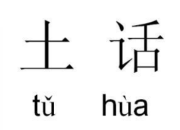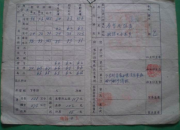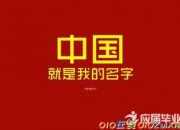介绍成语的来源与汉译
时间:2021-08-31介绍成语的来源与汉译
所谓典故性成语,指的是出自历史事件、寓言、神话、传说等一类的成语。其特点是源远流长,富含较浓厚的民族色彩,广为民间使用,约定俗成。如果说多以词、词组、句子形式出现是语言的结构特征,那么作为语言一分支的典故性成语多以词组形式而很少以句子形式出现。它虽然结构简单,但内容丰富,意义精深。其形式的固定性、意义的整体性表明不可随意改变它的结构,也不可随便将其中的各词分割开来。如cat's paw,可谓最简单不过的了,但又绝非杜撰和臆造,而是出自法国拉丰丹的一则寓言故事,讲一只猴子利用猫为其从火中取栗子。在现实生活中则常用来指被别人当作工具或爪牙利用的人。又如no respecter of persons在用字方面也可谓比较简单,它出自《新约使徒行传》第十章:"Then Peter opened his mouth,and said,of a truth I perceive that God is no respecter of persons,"原指上帝"不偏待人",如今该成语在本义的基础上暗含"歧视"之义,然而在不民的语境中效果却不一样。GoDoHoCole曾在"Practical Economics"中用此成语来说明墨索里尼"不偏待人",其实是对他的讽刺。如果能将此类成语运用得恰到好处,就会使文章、演说等大为增色,从而说明深刻的道理,使人受到深刻的教育。下面拟就典故性成语的来源与汉译作下探讨:
一、源于历史故事或历史事件。
历史上出现过众多的著名历史故事或事件,后人常用一简洁说法表达其内容,沿用久了就成了成语。如Sword damocles出自古代希腊的一则历史故事。业通古希腊历史、文学的罗马杰出作家与政论家西塞罗在其论文《图斯库拉的谈话》中写道:"纪元前4世纪西西里岛上叙拉古的统治者狄奥尼修斯一世有个亲信的佞叫达摩克里斯,他很羡慕帝王的豪华生活,常说:"君王是人世间最幸福的人"。狄奥尼修斯为了教训这个想得君位者,在一次宴会上,要他坐在国王的宝座上,当他猛然抬头,只见头顶上有一把用头发悬着的宝剑,随时都刺到头顶的危险。他吓得战战兢兢,如坐针毡,时刻提心吊胆,惶惶不安。由此便产生了"达摩克里斯的宝剑"这个成语,它被用来比喻临头的危险或情况的危急,类似于汉语的"千钧一发"。又如burn one's boats(bridges),此成语中的bridges为美国人所使用,原指古罗马朱力斯o凯撒大军乘船越过Rubicon后就把船烧了,以此向士兵指明后路已断,不可能后退。现借用来比喻"不留后路,下定决心干到底",同汉语的"破釜沉舟"。
二、源于寓言故事。
寓言是用比喻的形式说明一定的道理,是文学作品中最为短小精练的一种形式。如kill the goose to get the eggs,源于希腊寓言,说的是曾有一个乡下人,因为发财心切杀死了自己饲养的那只能下金蛋的鹅,以为如此就可一次获得全部想象中的金块,但其结果一无所获。现借比喻只贪图眼前利益,没有长远打算。但汉语中不说"杀鹅取卵"而说"杀鸡取卵",喻体不同,因此汉译时须遵循汉语成语的搭配规律。又如Veper and File出自《伊索寓言》,说的是一条蝰蛇(Viper)发现一把铁锉(File),以为是一顿美餐。但铁锉说,它的天职是咬别人,而不是被别人咬。后人借此比喻"骗人者反受人骗",汉译时要作直译或意译处理。
三、源于神话故事。
神话是关于神仙或神化的古代英雄的故事,是古代人们对自然现象和社会生活的一种天真的解释和美好向往。如rain cats and dogs,源于北欧神话,猫对天气有很大影响,英国水手至今说:"猫尾巴藏大风"。据说驾暴风雨的巫士化为猫形。狗是风的信号,狗和狼都是暴风雨神奥丁的随从。在德国古画中,风被画成狗头和狼头。因此 ,猫被年作暴雨的象征,狗是伴随暴雨的强风,to rain cats and dogs就是to rain heavily/hard,汉译便为"下倾盆大到雨"。又如Analthea's horn,汉译常为"丰饶的羊角"。阿玛尔忒亚(Amalthea),希腊祖籍中一神女,是宙斯(Zeus为主神,相当于罗马神话中的朱庇特Jupiter)的保姆。婴儿时宙斯由神女阿玛尔忒亚喂以羊乳。为了感思,宙斯敲下一羊角送给她。许诺让羊角主人永远丰饶。
四、传说。
传说指的是人们口头流传下来的.关于某人某事的叙述。如swan song,据传说,音乐之神阿波罗(Apollo)的灵魂进入了一只天鹅,由此产生了毕达哥斯寓言:所有杰出诗人的灵魂都进入天鹅体内。另据相传天鹅(swan)在临终前唱的歌最优美动听。后人就用swan song来比喻诗人、作曲家、演员等的"最后作品",这也是其汉译形式。又如Leave no stone unturned,相传公元前447年波斯奖军马多尼奥斯在希腊的普拉蒂亚兵败被杀后,留下一大批财宝在军帐里。底比斯的波利克拉特斯搜寻却一无所获,请示德尔斐神谕后知道要"翻转所有的石头",最后找到了财宝。现借此比喻想方设法等,汉译为"千方百计,想尽办法"。
五、源于民间风俗。
如a bird of ill omen,源出古代占卜风俗,延至今日,猫头鹰、鹳则被视为吉祥鸟)。渡鸟嗅觉灵敏,能确定远方死尸和腐尸地点。因此渡鸟象征死亡。猫头鹰在恶劣天气来临之前喊叫,而坏天气常带来疾病,故猫头鹰被视为丧鸟,阴森之鸟。后人以此比喻"不吉利的人,常带来不幸消息的人",汉译也是如此。又如a feather in your cap,汉译为"值得荣耀的事、荣誉"。源于广泛流行于亚洲和美洲印第安人当中的一种风俗:每杀死一个敌人就在头饰或帽子上加插一根羽毛。古代吕西亚人和许多其他古人也有类似风俗,均以此来显示战绩与荣誉。
六、源于谚语。
谚语是在人闪中间流传的固定语句,用简单通俗的话反映出深刻的道理,是社会生活经验的总结。如birds of a feather flock together.即"物以类聚,人以群分",转义为"一丘之貉"。在《鲁迅全集》中有这样一句:"增加混乱的倒是有些悲观论者……将一切作者诋为'一丘之貉"。其英译为In fact it is these pessimists who increase the chaos by…considering all writers birds of a feather. 又如 early bird,其汉泽为"早起者,早到的人",源出谚语The early bird gets/catches the worm.意为"捷足先登(得),先下手为强"。比较First come,first served.意指"先到的先招待",与前一个有所不同。











